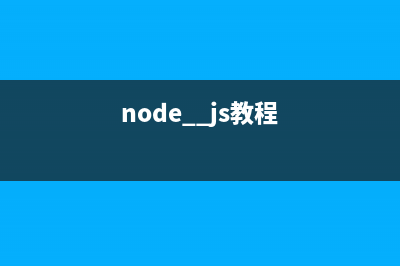俺觉得自 己试着写写sql,调试调试还是有帮助的,读人家sql例子好像读懂了,自己写就未 必思路正确,调试得通,写得简洁。 跟着网上流行的学生选课表的例子复习了一下: 这篇文字在网上被转载烂了,里面有些sql适合用在应用系统里,有些“报表”的感 觉更重些,主要是想复习前者。前条大体还挺好,后条明显偏报表风格了,而 且后面选例良莠不齐,选了个例子做练习,(其实很多语法,case, any/all, union之类的都没包括),用mysql数据库,并共享自己造出来的数据。关于这条 sql, 修正了原文中有纰漏的地方。 sql是基本技能,若能写得好也挺精彩的,还在继续练习。绝不提倡努力写复杂sql 解决业务问题。应用系统里如果存在很复杂的sql,往往揭示了业务逻辑向下泄露 到sql层的问题,不利于维护和扩展,虽然这样确实常能提高运行效率。具体情况 自行取舍。 下面的例子都是比较通用的sql, 其实针对特定的数据库,需要学的也挺多,比如 oracle db的decode函数, rowid, rownum, connect by 虽然不通用,但是很实用。 数据可以在这里下载,只是用作练习,没做任何外键关联: 整理的sql在下面: Student(S#,Sname,Sage,Ssex) 学生表 Course(C#,Cname,T#) 课程表 SC(S#,C#,score) 成绩表 Teacher(T#,Tname) 教师表 1. 选出每门功课都及格的学号 select distinct `s#` from sc where `s#` not in (select `s#` from sc where score <) 2. 查询“1”课程比“2”课程成绩高的所有学生的学号; SELECT c.`s#` from (select `s#`, `score` from sc where `c#`=1) c, (select `s#`, `score` from sc where `c#`=2) c where c.`s#` = c.`s#` and c.score > c.score 3. 查询平均成绩大于分的同学的学号和平均成绩; select `s#`, avg(score) from sc group by `s#` having avg(score) > 4. 查询所有同学的学号、姓名、选课数、总成绩; select student.`s#`, student.`Sname`, count(`c#`), sum(score) from student left outer join sc on student.`s#` = sc.`s#` group by student.`s#`, sc.`s#` 5.查询没学过“叶平”老师课的同学的学号、姓名; select student.`s#`, student.`Sname` from student where student.`s#` not in (select distinct(sc.`s#`) from teacher, course, sc where Tname='叶平' and teacher.`t#` = course.`t#` and sc.`c#`= course.`c#` ) 6. 查询学过“”并且也学过编号“”课程的同学的学号、姓名 select student.`s#`, student.sname from student, sc where student.`s#` = sc.`s#` and sc.`c#` = 1 and exists (select * from sc sc_2 where sc_2.`c#`=2 and sc.`s#`=sc_2.`s#`) 7. 查询学过“叶平”老师所教的所有课的同学的学号、姓名 (巧妙) select `s#`, sname from student where `s#` in (select `s#` from sc, teacher, course where tname='叶平' and teacher.`t#`=course.`t#` and course.`c#`= sc.`c#` group by `s#` having count(sc.`c#`)= (select count(`c#`) from teacher, course where tname='叶 平' and teacher.`t#`=course.`t#`) ) 8. 查询课程编号“”的成绩比课程编号“”课程低的所有同学的学号、姓名 (有代表性) select `s#`, sname from (select student.`s#`, student.sname, score, (select score from sc sc_2 where student.`s#`=sc_2.`s#` and sc_2.`c#`=2) score2 from student , sc where sc.`s#`=student.`s#` and sc.`c#`=1) s_2 where score2 < score 9.查询没有学全所有课的同学的学号、姓名 select student.`S#`, Sname from student, sc where student.`s#` = sc.`s#` group by `s#`, sname having count(`c#`) < (select count(`c#`) from course) . 查询至少有一门课与学号为“”的同学所学相同的同学的学号和姓名; select distinct(sc.`s#`), sname from student, sc where student.`s#`=sc.`s#` and `c#` in (select `c#` from sc where `s#`=) . 把“SC”表中“叶平”老师教的课的成绩都更改为此课程的平均成绩; update sc inner join (select sc2.`c#`, avg(sc2.score) score from sc sc2, teacher, course where sc2.`c#`=course.`c#` and tname='叶平' and teacher.`t#` = course.`t#` and course.`c#`=sc2.`c#` group by course.`c#`) sc3 on sc.`c#`=sc3.`c#` set sc.score=sc3.score . 查询2号的同学学习的课程他都学了的同学的学号;(注意理解:where语句的 第一个条件过滤掉不满足c#的记录,再group by,就比较清晰) select `S#` from SC where `C#` in (select `C#` from SC where `S#`=2) group by `S#` having count(*)=(select count(*) from SC where `S#`=2); 作者 人在江湖
推荐整理分享分享整理的12条sql语句连同数据(学会整理内容),希望有所帮助,仅作参考,欢迎阅读内容。

文章相关热门搜索词:整理的要诀,分享整理小妙招,整理seiri,整理7s,整理分为哪几步,分享整理小妙招,学会整理内容,整理分为哪几步,内容如对您有帮助,希望把文章链接给更多的朋友!
sql语句查询数据库中的表名/列名/主键/自动增长值实例 sql语句查询数据库中的表名/列名/主键/自动增长值----查询数据库中用户创建的表----jsj为数据库名selectnametablenamefromjsj..sysobjectswheretype='U'andnamenotin('dtp
教你怎么使用sql游标实例分享 [sql]--1.将每个老师的工资更新为原来的工资+奖金--定义两个变量,用来存储ttid与rewarddeclare@tidintdeclare@rewardmoney--1。建立一个基于奖金表的游标declarecur_re
SQLServer 实现数据库同步备份 过程-结果-分析 数据库复制:简单来说,数据库复制就是由两台服务器,主服务器和备份服务器,主服务器修改后,备份服务器自动修改。复制的模式有两种:推送模










